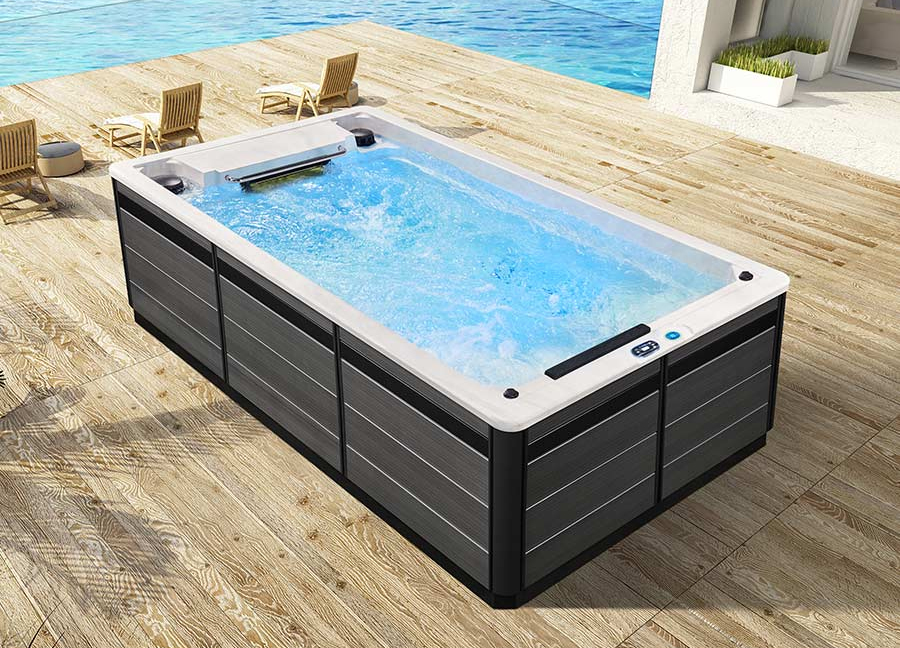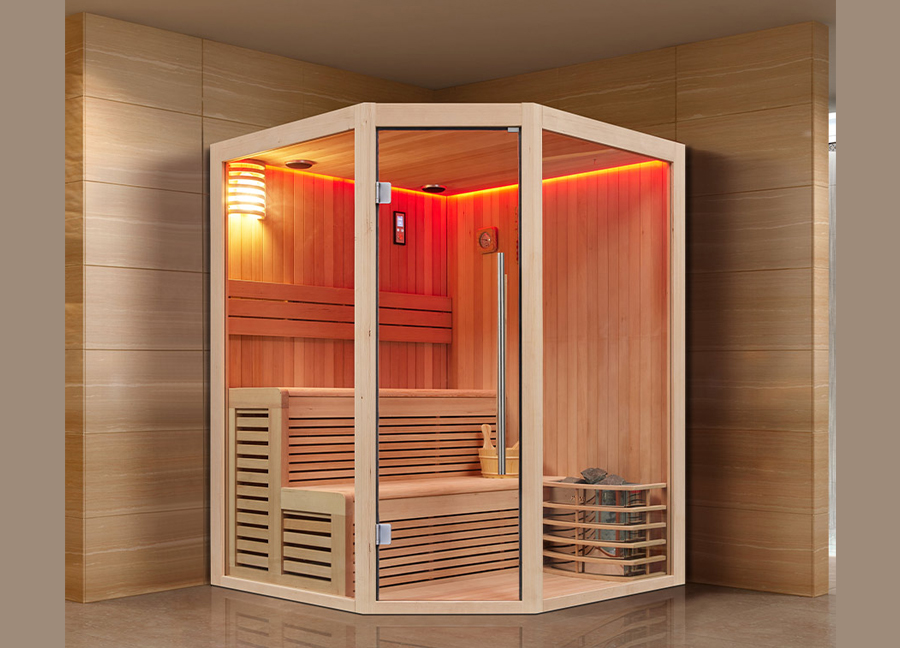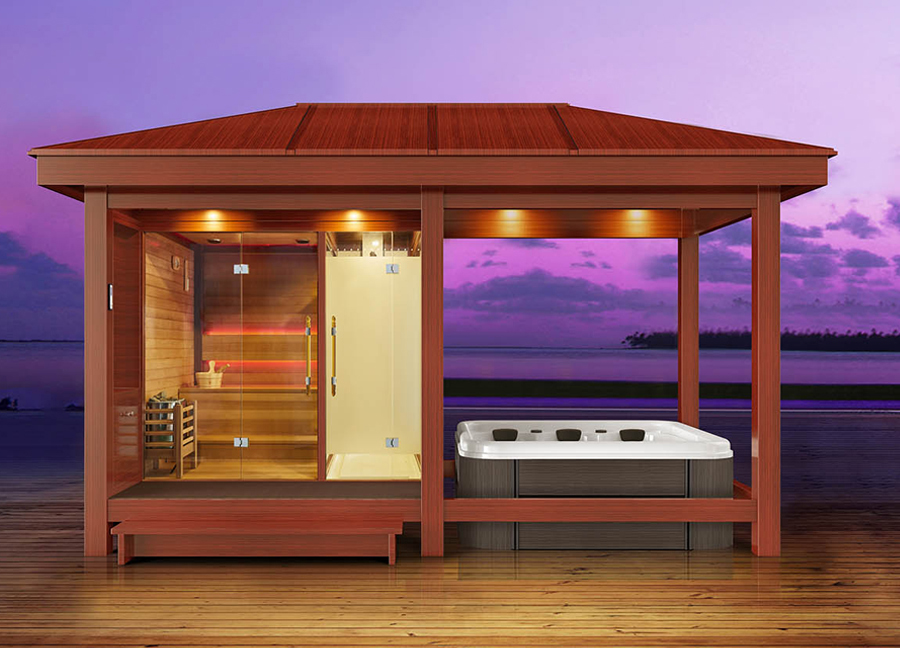Spa jacuzzi tubs are increasingly popular in homes, hotels, and high-end clubs due to their comfortable massage function and relaxing experience. However, with increased usage, a key question has arisen: can spa jacuzzi tubs harbor bacteria?
This article will provide a detailed analysis from a professional perspective on the possibility, causes, preventative measures, and cleaning and maintenance methods for bacterial growth in spa jacuzzi tubs, offering you comprehensive information.
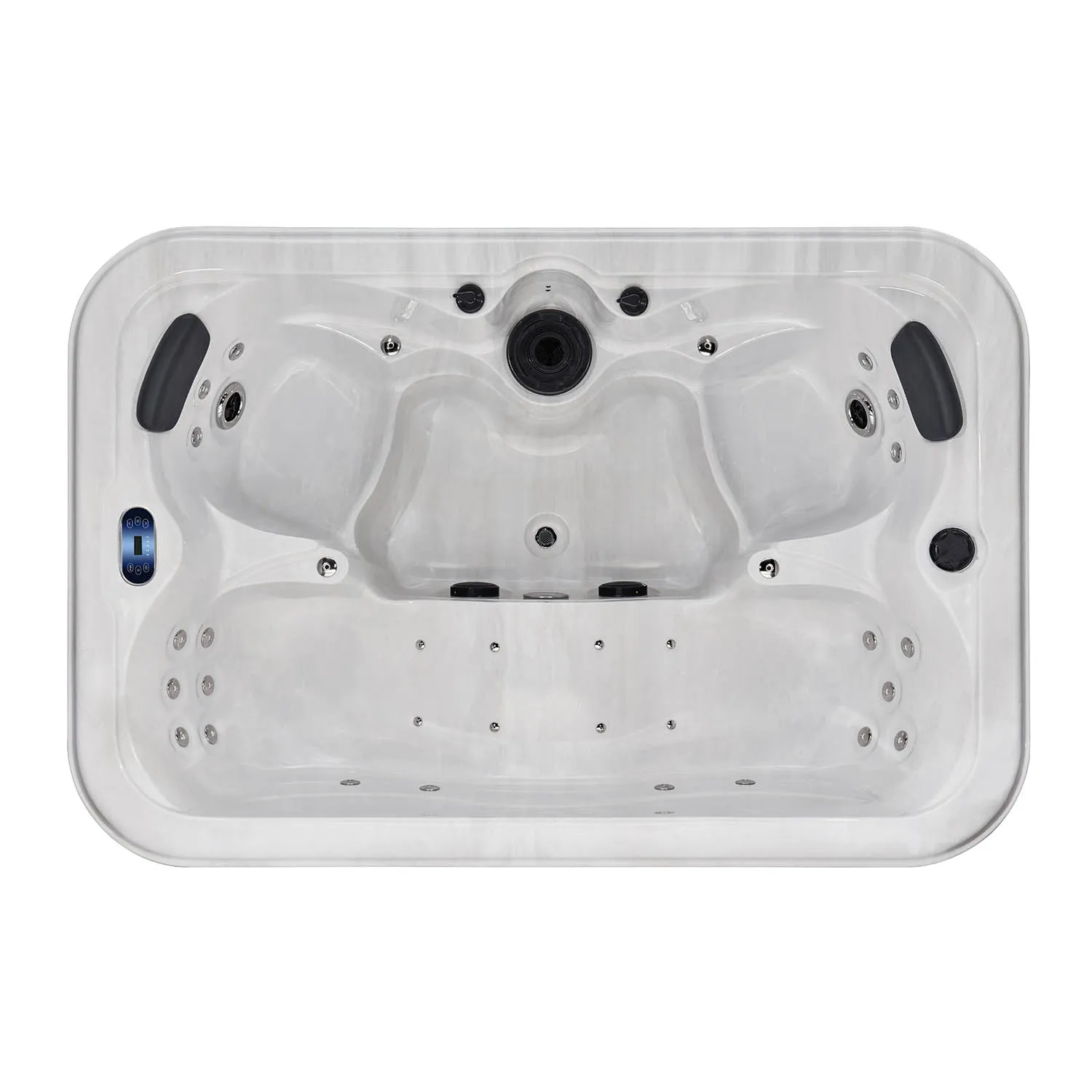
Spa jacuzzi tubs: Structure and the Risk of Bacterial Growth
The biggest difference between a spa jacuzzi tub and a regular bathtub lies in its internal jet system, water pump, circulation pipes, and massage nozzles.
• Circulation pipe system: Water in a spa jacuzzi tub typically circulates through pipes and is sprayed through the nozzles to create a massage effect. The water flow within the pipes is complex, and some pipes have dead corners. If not cleaned properly, these areas can easily become breeding grounds for bacteria.
• Water pump and nozzles: After the water pump draws in water, it drives the nozzles to create bubbles or water flow for massage. If dirt or scale remains on the nozzle surface for a long time, it can provide a breeding ground for bacteria and algae.
• Heating System: The water temperature in a spa jacuzzi tub is typically maintained between 36°C and 40°C. While this temperature range is comfortable for humans, it is also an ideal temperature for the growth of certain bacteria and molds, increasing the potential risk of bacterial proliferation.
Therefore, the structure of a spa jacuzzi tub makes it more prone to creating a breeding environment for bacteria compared to a regular bathtub, but this does not mean it is uncontrollable or impossible to eliminate.

What are the common types of bacteria in a spa jacuzzi tub?
The main types of bacteria that can proliferate in a spa jacuzzi tub include:
1. Escherichia coli,
2. Legionella,
3. Pseudomonas aeruginosa,
4. Mold and algae.
• Escherichia coli: This can be introduced through the user's skin, sweat, or urine. If the water is not changed regularly or cleaning is inadequate, E. coli can easily multiply in the water.
• Legionella: Legionella thrives in warm water, especially in warm, humid areas with slow water flow, such as circulation pipes and nozzles. Long-term neglect of cleaning can pose a potential infection risk.
• Pseudomonas aeruginosa: Common in humid environments, Pseudomonas aeruginosa can cause skin and ear infections and is one of the most frequently detected bacteria in spa jacuzzi tubs.
• Mold and Algae: The humidity and water temperature inside the pipes are ideal for mold growth, while surface scale can promote algae growth.
These bacteria can generally be effectively controlled through proper cleaning, disinfection, and water quality control. However, neglecting maintenance can pose a health threat.
Why do bacteria easily grow in spa jacuzzi tubs?
1. Water Circulation and Residual Water
The circulation system of a spa jacuzzi tub is designed for massage and bubble effects, but uneven water flow or stagnant water often exists within the pipes. These stagnant water areas easily accumulate dead skin cells, sweat, and cosmetic residue, providing a nutrient source for bacteria.
2. High Temperature Environment
The bathtub water temperature is maintained between 36°C and 40°C. While this temperature is comfortable for humans, it's ideal for bacteria that thrive in warm environments. Legionella and Pseudomonas aeruginosa multiply rapidly at this temperature, and without regular water changes or disinfection, bacterial numbers can increase rapidly.
3. Difficulty in Cleaning
The internal pipes and nozzles of a spa jacuzzi tub have a complex structure, and many users cannot completely disassemble and clean them. This leads to the long-term accumulation of limescale, soap residue, and sebum inside the pipes, all of which are important conditions for bacterial growth.
4. Insufficient Disinfection Frequency
Many households and some public places lack scientific disinfection frequency and methods when using spa jacuzzi tubs. Insufficient residual chlorine in the water or improper use of disinfectants can also make it easier for bacteria to multiply.
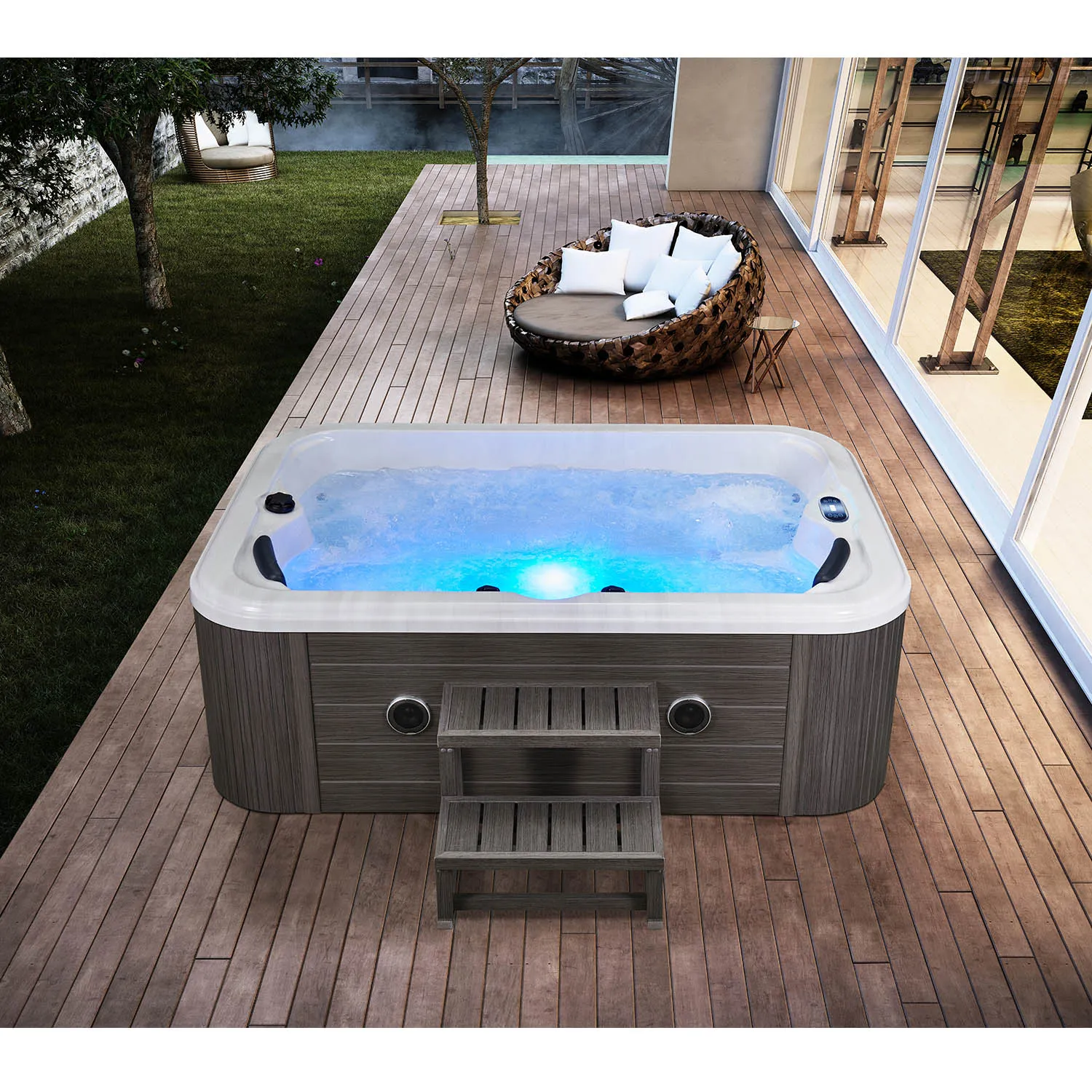
How to determine if a spa jacuzzi tub has bacterial growth?
While it's generally impossible to visually assess bacterial levels in water at home, the following signs can help:
1. Cloudy or Odorous Water
Clear, transparent water is a sign of health. If your spa jacuzzi tub is cloudy, smelly, or has excessive foam, it indicates potential bacterial growth.
2. Skin Abnormalities
Redness, itching, or irritation after using the spa jacuzzi tub may be related to bacterial contamination.
3. Scale or Mold on the Equipment Surface
Obvious scale, mucus, or black mold on the nozzles, pipe openings, or base indicates inadequate cleaning and a risk of bacterial growth.
By observing these signs, users can take timely cleaning and disinfection measures to reduce health risks.
Spa Jacuzzi Tub: How to Use and Control Bacteria Safely
1. Change the Water Regularly
Whether at home or in a public place, it is recommended to change the water after each use or at least weekly to prevent water from stagnating in the pipes and creating conditions for bacterial growth.
2. Pipe and Nozzle Cleaning
• Use a dedicated brush to clean nozzles and pipe openings;
• Perform regular pipe circulation cleaning using low-foam or professional pipe cleaners;
• When cleaning, disassemble removable parts to ensure every corner is cleaned.
3. Using Disinfectants
• Chlorine disinfectant: Add an appropriate amount of chlorine tablets or powder to maintain residual chlorine in the water within a safe range, inhibiting bacterial growth;
• Oxidizing agents or bromine disinfectants: As alternative disinfectants, they can also effectively control bacteria;
• Follow the product instructions for disinfectant dosage to prevent skin irritation.
4. Controlling Water Temperature and Circulation Time
• Avoid maintaining the water temperature above 37°C for extended periods, especially when the water is not in use;
• Control the running time of the circulating water pump to prevent water from stagnating in the pipes for extended periods.
5. User Personal Hygiene
• Rinse your body before using the spa jacuzzi tub to remove sweat, sebum, and dirt;
• Avoid bathing with makeup or oil-based cosmetics on;
• Extra caution is needed when using this tub on children or those with broken skin.
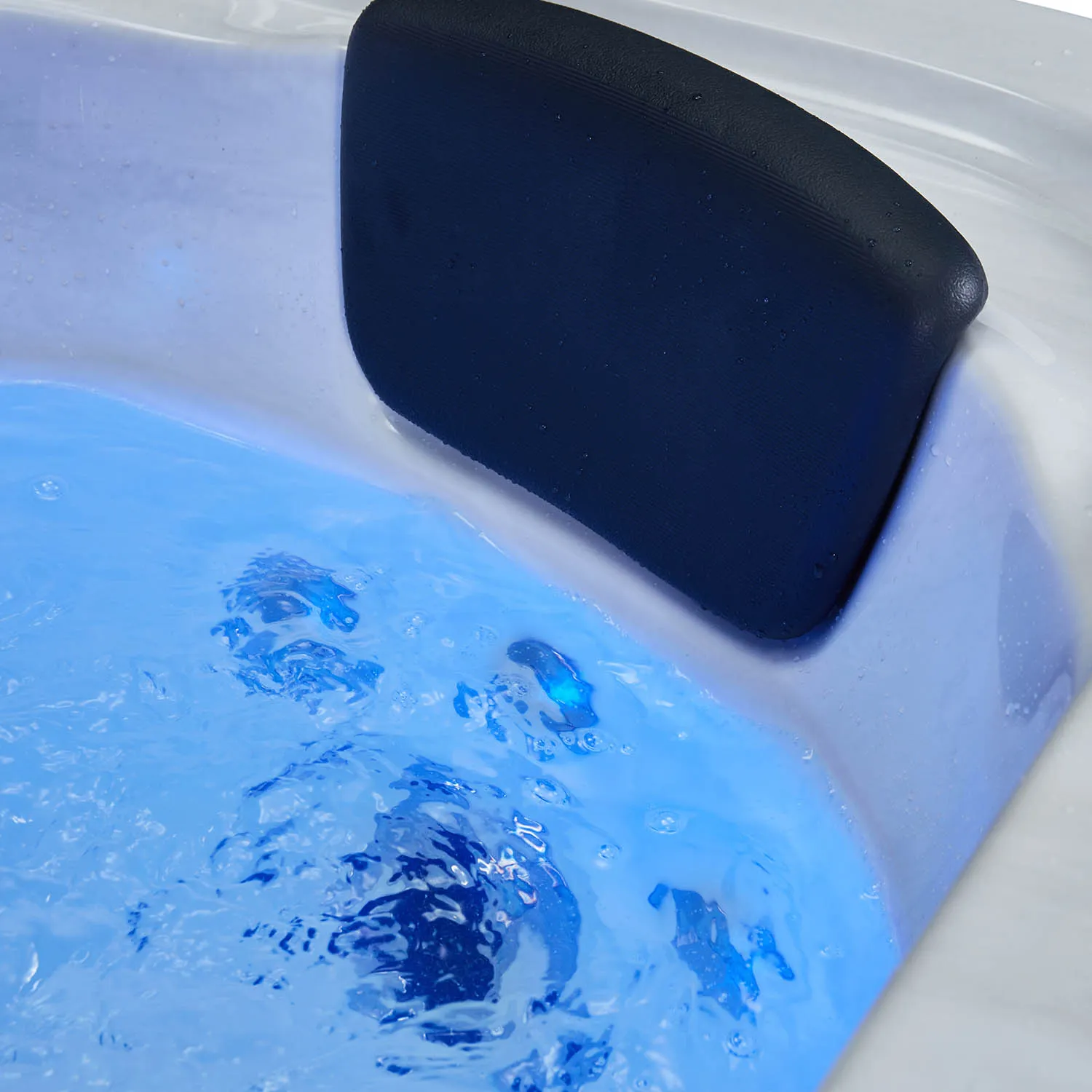
Frequently Asked Questions about Spa Jacuzzi Tubs
Does frequent use of the spa jacuzzi tub increase the risk of bacteria?
Yes, frequent use without regular water changes or disinfection increases the likelihood of bacteria multiplying in the pipes, nozzles, and water. Therefore, spa jacuzzi tubs used frequently require strict adherence to cleaning and disinfection protocols.
Will disinfectants harm the human body?
When disinfectants are used correctly within the recommended concentration range, they generally do not have a significant impact on skin or health. However, excessive concentrations or improper use may cause skin irritation, eye discomfort, and other problems. It is recommended to strictly follow the product instructions.
Are spa jacuzzi tubs in public places more prone to bacterial growth?
Public places have a higher risk of bacterial growth due to the large number of users and the difficulty in completely controlling water quality. Therefore, public spa jacuzzi tubs are typically equipped with automatic circulation and disinfection systems and require regular deep cleaning of the pipes to ensure water safety.
Can home spa jacuzzi tubs completely avoid bacteria?
Any aquatic environment may contain trace amounts of bacteria, but through scientific cleaning, regular disinfection, controlling water temperature, and proper usage habits, bacterial levels in spa jacuzzi tubs can be kept within safe limits. The key is consistent daily maintenance, not a one-time operation for permanent safety.
Are Your Outdoor Products Weather-Resistant?
Yes. Our outdoor spas, outdoor gazebos, and swim spas are designed to withstand harsh climates. Acrylic shells are UV-resistant, wooden structures are weatherproofed, and electrical parts meet international safety standards. This resilience allows us to supply products globally, from hot Middle Eastern resorts to snowy European ski hotels.
If you need quotes for durable, high-quality outdoor equipment at factory prices, MEXDA offers the best balance of performance and affordability.

